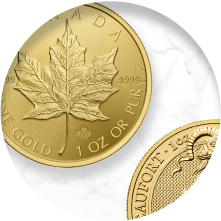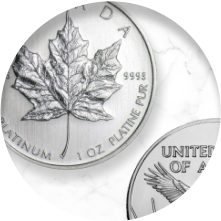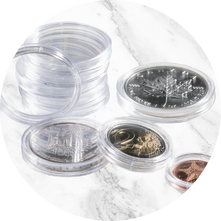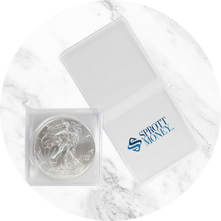In this Monthly Wrap-Up, host Craig Hemke is joined by legendary investor Rick Rule to break down the latest developments in the precious metals market. We discuss gold’s strong March gains, why the gold price is going much higher, the declining purchasing power of the U.S. dollar, mining stocks, and the future of commodities like copper. Rick shares deep insights backed by 50 years of experience, including his views on upcoming economic risks and how investors can protect their wealth with precious metals. Watch today!
Rick Rule on Gold, Silver, Bitcoin, and Why Investors Should Pay Attention Now
Rick Rule emphasized what he sees as the inevitable surge in gold prices. While gold has already rallied nearly 7% in March alone, Rule argues that this is just the beginning.
He points to long-term historical performance as evidence. “Since the year 2000, gold has compounded at almost 9% annually,” he said, pushing back on the misconception that gold hasn't moved. According to Rule, the key factor driving this next leg higher is the declining purchasing power of the U.S. dollar.
He believes we are entering a decade where the dollar will lose 75% of its purchasing power—much like the 1970s. That era saw gold rise from $35 to $850, a 30x move. “Gold will not just go higher—it will go much higher,” Rule insisted.
His forecast is grounded in arithmetic: with over $130 trillion in U.S. liabilities (on and off the balance sheet) and real interest rates remaining negative, he sees gold as a hedge against systemic fiscal mismanagement.
Silver Investments: Silver’s Time to Shine
Silver also had a stellar March, climbing over 10%. Rule sees this as silver playing “catch-up” to gold and expects this trend to continue. Importantly, he believes silver’s dual role as both a monetary and industrial metal gives it additional long-term tailwinds.
With rising demand in electronics and green energy technologies, silver’s fundamentals are strong. Additionally, as investor interest in precious metals increases, Rule expects silver mining stocks—currently undervalued—to benefit significantly.
The Mining Stock Opportunity: An Undervalued Sector
While gold has surged, many gold and silver mining stocks remain deeply undervalued, according to Rule. He attributes this to two key factors:
- Foreign central bank buying gold, not stocks
- Poor historical performance of mining companies, particularly from 2000 to 2010
However, he notes that quality mining stocks have started to outperform. Companies like Franco-Nevada, Wheaton Precious Metals, and Agnico Eagle have seen 40–60% gains recently.
“This is the same pattern we’ve seen in every gold bull market,” Rule said. Gold leads, followed by high-quality stocks, then eventually the entire sector benefits through acquisitions or broader investor interest.
He predicts a coming M&A wave where larger mining companies will buy up smaller producers to consolidate and reduce risk. This could create substantial gains for early investors in junior mining stocks.
Real Interest Rates and Inflation: The Hidden Threat
Rule argues that the real rate of inflation is significantly higher than government-reported figures. “The CPI doesn’t include food, fuel, or taxes,” he said, calling it a poor measure of actual living costs.
He estimates the real inflation rate is closer to 7.5%, while 10-year Treasury bonds yield only 4.5%. This means savers are effectively losing 3% per year in real terms. “If you give the U.S. government your money for 10 years, they promise to return it with 40% less purchasing power.”
Bitcoin and Alternative Assets: Where Does Crypto Fit?
While Rule did not spend much time discussing Bitcoin in this episode, he has historically maintained a measured but skeptical view of cryptocurrencies. His primary concern lies in the lack of intrinsic value and the extreme volatility, which contrasts with gold’s role as a stable store of value.
Still, he acknowledges that younger investors may see Bitcoin as a hedge against fiat currency debasement, much like gold. However, for conservative investors or those looking for long-term security, he continues to favor tangible assets like gold and silver.
Final Thoughts: Hedging Against Economic Instability
Rule’s overarching message was clear: investors should be preparing for a decade of economic volatility and currency erosion. His recommendation? Increase portfolio exposure to precious metals.
“Even a small allocation—2% to 10%—to gold can shield your broader portfolio against major losses,” he said. He’s not suggesting an all-in approach, but rather a strategic hedge in an uncertain environment.
Contact the Sprott Money team to learn more about gold and silver investment.
Craig Hemke (00:00) Hello again from Sprott Money, SprottMoney.com. My goodness gracious, we have reached the end of March. 25 % of the year 2025 is already now in the books. It's time for your monthly wrap up. I'm your host, Craig Hempke. And joining us with us here this month is my friend, legendary resource investor.
precious metals investor Rick Ruhl. Rick, good to see you my friend.
Rick Rule (00:59)
Craig, it's great to be back with you. Thank you for having me back.
Crag Hemke (01:02)
Well, it's just, it's always a pleasure to get caught up with you and thank you so much for carving out some time to visit here on the Sprott Money channel. is, I just, I still, can't believe we're talking about the end of the first quarter already. Where's the time gone? Hey, before we get started, just to remind everybody again, Sprott Money is who puts this information out. Doesn't just appear out of thin air, right? So let's thank them for that. Be sure to visit SprottMoney.com. Hey, if you're going to play along in any silver buying,
Spree on Monday. Apparently, you know, there's some movement afoot buy a bunch of silver on Monday the 31st If you want to do that go to Sprott money comm they'll set you up with great deals You can call them 888-861-0775 when you're done, they'll even store it for you They'll ship it to you to free insured anything over 500 bucks again Sprott money comm buy yourself some silver and See if we can't
extend these rallies. Rick, it has been a heck of a month. We're recording this here Thursday the 27th. We still got two market days to go, but I wrote down spot price of gold as we speak on Thursday. 196 bucks to the good, my friend. That's 6.8 % this month. Silver doing what silver should do up $3.20 or a little more than 10%. Let's start there. What do you make of all this?
Rick Rule (02:28)
Well, mean, in fairness, looking back over three or four years of interviews that you and I have done, we've been talking about, frankly, the inevitability of just exactly this. I remember last year you and I were talking, and I sort of made a joke. People then were bored of gold, and they said, well, when is the gold price going to move? And I said, well, I scratched my chin sagely, and I say, I think gold's going to move in 2000.
In the year 2000, gold was at 253 bucks an ounce, and now it's over 3000. Gold has done almost 9 % compounded for 25 years, and people had a strange sense that gold hadn't moved. So I think what has happened is what had to happen.
Rick Rule (03:22)
I remember in one of earlier interviews talking about the difference between inevitable and imminent. The move had to happen, but it didn't have to happen in a time frame that was convenient to people. But now I think it's moving faster. And my own suspicion, Craig, is that maybe it's due for arrest, maybe it's not. Nobody knows in the near term. But I think the arithmetic around gold and silver too takes it not merely higher, but much higher.
And if you'll humor me, I'd like to explain that in arithmetic terms. In my experience, 50 years of watching these markets, speaking of time flies, the precious metals do very, very, well when people are concerned about the maintenance of their purchasing power. In fiat-denominated savings instruments,
Rick Rule (04:17)
And I would suggest that the arithmetic around fiat-denominated savings instruments is very challenged. People have reason to be concerned. From here, first, let's look at the U.S. dollar. The U.S. dollar is constrained, I would suggest, because the U.S. government's on-balance sheet liabilities exceed $36 trillion. We've talked about that before. The much scarier number is the off-balance sheet liabilities.
the net present value of Social Security, Medicare, Medicaid, federal pensions, military pensions, that number, according to the Congressional Budget Office, exceeds $100 trillion. So the net obligations of the guarantor of the US dollar are over $130 trillion. Craig, to put that in perspective, the Internal Revenue Service estimate of the private net worth of Americans
Rick Rule (05:15)
is $141 trillion. So there's $11 trillion left over, but it gets worse. Every year, the on balance sheet liabilities of the US government increase by $2 trillion a year. And every year, the net present value of the off balance sheet liabilities of the US government increase by $2 trillion a year. People say, well, hope is in sight.
Crag Hemke (05:23)
But wait, there's more!
Rick Rule (05:45)
We have Elon, the Department of Government Efficiency. I would urge people to read a book called The Triumph of Politics by David Stockman. David Stockman was the director of the Office of Management and Budget in the first Reagan era. And he talks about the derailment of the original Department of Government Efficiency by political forces in six months. I don't think it's gonna work. What I think is going to happen
Rick Rule (06:15)
is what happened in the decade of the 1970s. In the 1970s, your older viewers will remember that we fought the war on poverty in the 1960s, which we lost, and we fought the war in Vietnam, which we lost. And it was politically unpalatable to cut any programs, even the conservatives wanted their social security after all, and industrial subsidies and stuff like that. And so what we did,
is rather than change the nominal value of our obligations, old codgers like me who were promised X in Social Security still got the X, but what happened is that they depreciated away the dollar. They reduced the net present value of the obligation by depreciating away the purchasing power. In the decade of the 1970s, according to the Office of Management and Budget, the purchasing power of the U.S. dollar declined by 75 % in 10 years.
This is not an alarmist Rick rule number. This is the Congressional Budget Office. That's the, no, I'm sorry, the Office of Management and Budget. Not coincidentally, the gold price increased 30-fold. Now I would suggest to you that the move from $35 to $100 had to do with taking away price controls on gold, deregulating the price of gold. But the move from $100 to $850,
was all about the deterioration of the purchasing power of the US dollar and then later on piling on to momentum. I believe that over the next 10 years, the purchasing power of the US dollar declines by 75 % again. I believe that an old codger like Rick Rule, who's getting paid, whatever he's getting paid, 4,000 a month in social security, whatever it is, continues to get that. But by the end of 10 years from now, it buys
25 % of what it buys today. And I believe that the consequence of that is that the gold price trades not merely higher, but much higher. And I want to give you two more pieces of arithmetic, not inconsistent with the discussions we've had in the past. Another reason to be concerned about the deterioration of the...
Rick Rule (08:35)
of the maintenance of purchasing power in your savings is the fact that I would suggest that today the real interest rate that you receive on your savings is negative. The government would have you believe that the CPI stated rate of inflation at 2.6 % is the real measure of the deterioration of your fiscal living standards. But it's not. The CPI, when it's inconvenient, doesn't include food or fuel. Any index that doesn't include lunch is of no interest to me at all.
Crag Hemke (09:00)
Bye!
Rick Rule (09:05)
But probably more importantly, it doesn't include tax. The most important living expense of most households in United States is tax. 36 % of GDP isn't measured in CPI. I would suggest as a thought experiment that your listeners look back at the price levels of the goods and services that they bought in 2020. Gasoline, mortgage interest, health insurance, health care.
Crag Hemke (09:14)
Yeah. Yeah.
Rick Rule (09:34)
food, what you'll find is that for the basket of goods and services consumed by most Americans, the deterioration of purchasing power of their currency is more like 7.5 % than 2.5%. So if you do a bit more math, if you buy the US 10-year treasury and you get paid 4.5%, in a currency where the depreciation of the purchasing power is 7.5%, you're not making 4.6%, you're losing 3%.
And if you do that for 10 years, if you lose 3 % compounded over 10 years, the US government solemnly swears that if you give them money for 10 years, they'll give you back 40 % less. A promise that they think they'll keep, that I think they'll keep. One more piece of math, Craig. And I know this is boring, we'll get on to other stuff later. One more piece of math around gold. According to JP Morgan Chase,
Crag Hemke (10:16)
Yeah, you probably...
No, it's great.
Rick Rule (10:31)
The market share of precious metals and precious metals related investments in the United States relative to all of the other asset classes that Americans own is only one half of 1%. That is to say, one half of 1 % of total savings investment assets in the United States is demarcated in precious metals or precious metal securities. The four decade mean market share is 2%.
If gold doesn't demolish Nvidia or outperform the S &P 500, if the treasury market doesn't crash, if all those sort of weird gold bug things don't happen, if sentiment merely returns to four decade mean, demand for the stuff goes up fourfold. I have no idea what a fourfold increase in demand does to the price, but remember that prices are set on margin.
I believe that the likely consequence of a 75 % deterioration in the purchasing power of the US dollar and the consequent increase in interest and hence market share for precious metals takes precious metals over 10 years, maybe not over 10 months, but over 10 years, not merely higher, but much higher. And if I'm wrong,
I don't think you lose much. A little bit of gold ownership goes a very long way in terms of hedging the rest of your portfolio. Let's say that the average American goes from half a percent to 2%, or for most Americans, from nothing to 2%. If the gold price escalates threefold or fourfold, that 2 % investment saves 10 % of your portfolio.
If by contrast you go to 10%, that shields 40 % of your portfolio. For those people who remember the decade of the 70s, a portfolio comprised of long bonds, which saw the 10-year interest rate go from 4.5 to 18, saw long bond portfolios decline by 75%. You have what you believe is a riskless asset. You enter the decade with $100,000 in savings, and you exit the exit with $30,000 in savings.
Crag Hemke (12:47)
riskless
Rick Rule (12:48)
If you had sheltered 40 % of that loss with gold, you still wouldn't feel great, but you'd feel a hell of a lot better.
In equities, had, people forget this, we had what was in effect a 12 year bear market in equities. 14 years, 1968 to 1982. The equities didn't go down, but they sure didn't go up. And if they didn't go up and the purchasing power of the dollar declined by 75%, guess what happened to your real wealth in an equities portfolio? I'm not suggesting that people sell their equities, that they sell their house, that they sell their bonds and buy gold. I'm suggesting that they take their market allocation to gold, unless they believe that the Barton
of government efficiency is going to wipe out $130 trillion worth of debt. And they add some gold. That's all I'm suggesting.
Crag Hemke (13:29)
Yeah.
Yeah. Rick, let me ask you, you kind of brought up, there's just so many things I want to follow up with, but I want to kind of steer off into the mining shares for a minute, because that's another area of your expertise. I, when you were talking about.
you know, investing in equities in general and the lack of exposure to gold. You know, I see, I see these headlines when the S and P has a rough day that says, you know, the S and P market cap fell by a trillion dollars today. And I'm reminded that the entire market cap of the GDX ETF is like 15 billion. Right. And so it's like, you know, there's a lot of money that could come into the sector here. And we all are wondering, you know, what will spark that? Now we've, we've gotten the GDX back to the highest levels it's seen in 12 years.
But what do you think will prompt, even moving back to that mean, like you said, a 2 % allocation to precious metals and equities?
Rick Rule (14:30)
I think there's three things that explain the disparity in performance between gold and the gold shares. The first is that the gold price has moved up because of foreign central bank buying. And foreign central banks don't buy gold shares. So if an asset class moves because of the existence of an investor base that doesn't exist in the other asset class, of course the shares wouldn't go up. You you don't see the Chinese central bank buying Newmont.
Crag Hemke (14:52)
Yeah, good point.
Right, good
Rick Rule (14:57)
Never
Crag Hemke (14:57)
point.
Rick Rule (14:57)
mind some Toronto penny dreadful. So that makes absolute sense. The second reason is a bit more pernicious. Investors, including gold investors, remember the dismal corporate performance of the gold sector in the period 2000 to 2010. To refresh people's memories, or perhaps their nightmares, in that decade the gold price moved up sevenfold and the free cash flow per share in the XAU fell.
That took real skill. The selling price of your product goes up sevenfold and your free cash flow declines. So the expectations from the gold shares for the last 15 years haven't been low. They've been sub-zero. The challenge has been to get under the bar. But the performance in the gold shares, at least the better gold shares in the last year, has been, a bad pun, sterling.
Crag Hemke (15:28)
Yeah.
All
Rick Rule (15:53)
If you look at the stocks that you and I talked about 18 months ago, we talked about the fact that the beta in the gold market was going to be more achievable than alpha, which is to say the amount by which the gold shares outperformed the broad market suggested that investors overshadow high quality companies for low quality companies. That's worked.
Crag Hemke (15:53)
You
Rick Rule (16:16)
Franco Nevada, admittedly having sold off as a consequence of cobre at Panama, comes back 40%. Wheaton Precious, 50%. Agnico Eagle, 60%. The companies that delivered good corporate performance have been really, really, really rewarded in the market. And the anatomy of the three prior Gold Bull markets that I've lived for through have all been the same. Gold leads.
then the highest quality gold stocks move. They establish big valuation discrepancies between themselves and the second tier. And that either gets addressed with
investors going down market to address valuation discrepancies or else it gets addressed by big companies taking over small companies. High share prices means a lower cost of capital. In a capital intensive business, that's a durable competitive advantage. So either that advantage gets arbed away in the market by value investors or it gets arbed away in &A. Either way it gets arbed and it moves all the way from the Franco-Nevadas over the course of four or five years to the penny dreadfuls.
Crag Hemke (17:06)
Yeah.
Rick Rule (17:28)
That's coming. You you saw not too long ago the takeover of sentiment by Anglo. Single asset producers are viewed as being rightfully riskier than multiple asset producers. You get rid of that risk by putting a single asset producer into multiple asset producer. So we're coming into this &A cycle that has the potential to be extremely virtuous. It adds hope and liquidity to a sector who needs both.
but it also allows us to have larger, more liquid vehicles with more index buying and capital allocation activities that are broader than would otherwise be the case. What I'm trying to say is I think we're coming into the sweet spot of the bull market now, one that requires less patience, less faith, and frankly, less understanding. I'm not suggesting that you make mistakes.
Crag Hemke (18:11)
Yeah, sounds like it.
Rick Rule (18:17)
I'm just saying that the performance of names like Alamos, Agnico Eagle, Franco Nevada, Wheaton Precious, suggests that the market's going to become less discriminating in the future.
Crag Hemke (18:30)
All right, let me ask you one last question. I want to pick your brain on it's just commodities in general, Rick. We've had a tremendous run like in copper, copper, new all time highs, at least in New York, maybe not quite there yet in London. This part of an underlying trend too.
Rick Rule (18:50)
Yeah, partially when you talk about new on all-time highs, remember that you're talking about nominal dollars. In real dollars, one would suggest we aren't necessarily there yet. I think in copper, the easiest explanation is that the market is trying to front run tariffs. Certainly the discrepancy between the London market and the New York market or the Chicago market.
Crag Hemke (18:56)
Well, yes.
A lot of catching up to do.
Rick Rule (19:19)
is almost all trans-shipment to avoid the possibility of tariffs. So that's understandable. But a second part reflects, in the copper business at least, the inescapable fact that the industry is under-invested in copper exploration production for 25 years. We are producing less copper than we're consuming, and there's no way in the next five years we're going to overcome that structural deficit.
The Chinese see it, so they're locking in supply. The Japanese see it, so they're locking in supply. The Indians see it, so they're locking in supply. And guess what? Even Trump sees it. And so corporate America is beginning to look to rebuild the American asset.
the American commodity acquisition strategy that was so prominent in American foreign policy in the 1950s and 1960s. Everything that the Chinese are doing today, which is to say state support, are things that the United States did in the 1950s and 1960s.
There things that the Japanese did in the 1970s. We resent it because somebody's doing it to us as opposed to us doing it to somebody else. But what's happening is all stuff that's tried and true historically. And it's impacting on markets.
Crag Hemke (20:33)
You
sounds like another prong of this whole theme. mean, if the math is the math and that's your friend in gold, the trend of, I guess, greater visibility and desire for gold-related investments that we talked about in the second question, and now the kind of a commodity bull market supply deficit that copper is like silver and silver is like copper, and the same kind of story trumps...
Rick Rule (21:05)
Peace.
Crag Hemke (21:11)
Let's get into more mining executive order that he issued last week. mean a lot of these dots seem to be lining up rather favorably for us going forward.
Rick Rule (21:20)
There could
be some risks in things like copper and oil. And that would be the fact that we've gone for a very, very, very long time without a recession. And you can have supply shortfalls, which you will have in oil and you will have in copper, if you have a demand shortfall and the prices still don't move. Economic nationalism of the type that we're seeing, tariffs, which are in fact taxes.
Crag Hemke (21:30)
Yeah, yeah.
Right.
Rick Rule (21:48)
competitive devaluation of currencies.
These are bad for the economic health of the world. And if we push too hard and we damage confidence, it isn't too hard. I'm not saying that we're going to see a recession. I'm not saying we're not. I'm not that smart. But what commodity investors have to look at, oil investors and copper investors as an example, they have to look at the upside and the downside. And the consequences of increased economic nationalism are all bad. So that is a risk.
Crag Hemke (22:21)
Yep.
Rick, as we wrap up, two things. Are you planning another one of your Rural Investment Media Symposiums again later this year?
Rick Rule (22:32)
We have a wonderful symposium coming up in Boca Raton, Florida. It will be headlined in a political sense by David Stockman. Nobody better place to talk about the Department of Government Efficiency than the guy who originated it and watched the first failure. But the real... Yeah, it's July 7th through 11th. The overall theme of our conference is really to present big picture thinkers
Crag Hemke (22:41)
great!
Right? For sure. For sure. That's summertime, Rick.
Okay.
Rick Rule (23:02)
from the belly of the beast, not commentators. We have Daniela DiMartino Booth talking about the Fed because she was part of the Fed, she was a researcher. We have Nomi Prins talking about the structure of Wall Street because she's an old Goldman Sachs partner. We have Jim Rickards talking about the financial structure of Wall Street because he was general counsel of long-term capital management who almost brought down Wall Street. And of course, David Stockman talking about politics.
Crag Hemke (23:10)
She's awesome. Yep.
Yeah, I did.
Rick Rule (23:27)
having been a former senator and the director of the Office of Management and Budget. Once we've taught people about the way the world is, as opposed to the way that CNBC or CBC tells you it is, we have absolutely world-class natural resource and precious metals investors to tell you how to take advantage of it. Not people who parachuted in three months ago because they screwed up in a crypto portfolio.
but rather people like John Hathaway who have existed profitably in precious metals equities investing or natural resource investing for three or four decades. Importantly, we have this great feature called the living legends where people who built multi-billion dollar public resource companies from scratch tell you how they did it, tell you the mistakes they made and tell you how it made them better investors and how you can be a better investor too.
The Robert Friedlins, the Ross Beatties, the Rob Quartermains, the Rob McKeowns, the Jonathan Goodmans of the world. All of them will be there telling you how they did it, how you can do it, how you can make mistakes. Two more things that are important. The first is that every exhibitor at the conference has been personally vetted by me. At most conferences, to be an exhibitor, the qualification is a check that cashes. You're an advertiser.
Crag Hemke (24:48)
Right, touch
it.
Rick Rule (24:49)
If
you're a public company exhibitor at this conference, the conference promoters have to own the stock. No guarantee, because I own the stock, it goes up. But there is a guarantee that I've looked at it. And if you're a bullion dealer, if you're a Sprott Money or somebody like that, you have to have existed without me hearing a customer complain about you for my 30 years in the business. If you are a bullion dealer who has a problem,
with regards to customer service that I've heard about, you're not on my floor. Every year we turn down more exhibitors than we accept. The consequence of all these things is that my conference, unlike anybody else's conference in the world, comes with a solid gold money back guarantee. If you pay to be there in person or if you choose to view it from the comfort and convenience of your own home, two things. First of all, you'll have access to recordings for a year and you'll need them.
Crag Hemke (25:33)
Yep.
Rick Rule (25:44)
We're gonna give you 50 hours of high quality programming. But secondly, the financial risk is all mine. If you don't believe you got your money's worth, just email me. Not a bunch of nosy questions. I'd love it if you tell me what I did wrong. But if you don't think your money's worth, you got your money's worth, email me. I'll give you your money back. Craig, in 30 years of putting on this conference, we've had to refund less than 1 10th of 1 % of...
the tuition that we've charged. But that's your guarantee. The financial risk is all mine. And I don't know of any other conference in the world with a money back guarantee.
Crag Hemke (26:18)
Yeah,
for sure, for sure. And that's in July for now, what website, some place people go to get more details, Rick? Ruralsymposium.com, easy enough. All right, Rick, one last thing. You always make the very generous offer to help people with their mining portfolios, where if they send you their 10 names that they own or like or whatever, if they email them to you, you'll rate them one through 10. You still doing that?
Rick Rule (26:26)
RealSymposium.com.
Yeah, it
doesn't have to be 10, as many names as you own. Don't send me list of everything you're thinking about buying, just the names you own. But send me your portfolio, I'll rank it one to 10 for free. Givens for free, there's an absolute money back guarantee. Send it to RuralInvestmentMedia.com, I'll rank it. I'll comment on issues where I think my comments might have value. Be a little patient, I'm about 250 behind right now.
Crag Hemke (26:47)
fabulous!
Here's a hundred.
Right.
goodness.
Rick Rule (27:13)
So it might take me seven or eight days to get back to people. Once again, rule investment media, natural resource stocks only. Please, please, please, no crypto, no pot stocks, no tech stocks. Leave an old resource guy to do what he does best.
Crag Hemke (27:29)
That's right,
exactly. Well, you always do these best too, Rick. It's always very insightful and helpful to listen to you. I want to thank you so much for your time. I kept it little longer and I promise, but it's just great to hear from you. So I very much appreciate you sharing all this information with us today.
Rick Rule (27:46)
Thank you so much. A special hello to your readers and a special hello hopefully through you to the entire Greater Sprott clan.
Crag Hemke (27:53)
Yeah, they're all they're all working hard these days. I know that Eric. Thank you so much. And thank you, everybody, for listening again. Keep your eye on this. Whatever channel you're watching this stuff or listening to it from Sprott money. Yeah, OK. We're about done with March, but it's going to be a busy April, too. And you don't want to miss anything. So hit the like or the subscribe button. You'll be notified as soon as something's posted. Again, thank you, Rick. And thank everybody for watching. This has been your monthly wrap up for March. We'll look forward to seeing you again sometime in early April.
Don’t miss a golden opportunity.
Now that you’ve gained a deeper understanding about gold, it’s time to browse our selection of gold bars, coins, or exclusive Sprott Gold wafers.
About Sprott Money
Specializing in the sale of bullion, bullion storage and precious metals registered investments, there’s a reason Sprott Money is called “The Most Trusted Name in Precious Metals”.
Since 2008, our customers have trusted us to provide guidance, education, and superior customer service as we help build their holdings in precious metals—no matter the size of the portfolio. Chairman, Eric Sprott, and President, Larisa Sprott, are proud to head up one of the most well-known and reputable precious metal firms in North America. Learn more about Sprott Money.
Learn More
You Might Also Like:


















Looks like there are no comments yet.